This article was co-authored by Dale Prokupek, MD. Dale Prokupek, MD is a board-certified Internist and Gastroenterologist who runs a private practice based in Los Angeles, California. Dr. Prokupek is also a staff physician at Cedars-Sinai Medical Center and an associate clinical professor of medicine at the Geffen School of Medicine at the University of California, Los Angeles (UCLA). Dr. Prokupek has over 30 years of medical experience and specializes in the diagnosis and treatment of diseases of the liver, stomach, and colon, including chronic hepatitis C, colon cancer, hemorrhoids, anal condyloma, and digestive diseases related to chronic immune deficiency. He holds a BS in Zoology from the University of Wisconsin – Madison and an MD from the Medical College of Wisconsin. He completed an internal medicine residency at Cedars-Sinai Medical Center and a gastroenterology fellowship at the UCLA Geffen School of Medicine.
There are 24 references cited in this article, which can be found at the bottom of the page.
This article has been viewed 167,188 times.
HIV (Human Immunodeficiency Virus) is a serious, lifelong infection that can lead to AIDS (Acquired Immune Deficiency Syndrome) when left untreated.[1] There are many myths about how HIV is transmitted, so do not assume that what you've heard is correct. Educate yourself before you inject drugs or have sex, even if you think it's safe or "not real sex."
Steps
Understanding HIV Transmission
-
1Know which fluids contain HIV. Someone infected with HIV cannot spread it by sneezing or shaking hands, like an ordinary cold. For an uninfected person to get HIV, he needs to come into contact with one of the following:[2]
- Blood
- Semen and pre-seminal fluid (cum and pre-cum)
- Rectal fluids (fluids found in the anus)
- Vaginal fluids
- Breast milk
- Saliva (contains a minuscule amount of the virus but salivary enzymes denature it)[3]
-
2Protect areas vulnerable to HIV infection. The safest way to avoid HIV is to avoid all contact with the above fluids. However, the following areas of your body are much more likely to pick up an infection if exposed to infected fluids:[4]
- Rectum
- Vagina
- Penis
- Mouth
- Cuts and wounds, especially if bleeding
Advertisement -
3Test yourself and sexual partners for HIV. Many people are infected with HIV without realizing that they have the virus. Having a saliva or blood test done at a clinic or doctor's office is the most accurate way to get tested, but there are also at-home tests you can take as well.[5] Get tested every time you have sexual contact with a new partner.[6] A "negative" result means you do not have the virus, while a "positive" result means you are infected with HIV.
- Many areas have HIV/AIDS clinics that provide free tests.
- You can usually get a result within the hour, but this is not 100% reliable. For accurate results, ask for the test to be sent to a lab, or get tested a second time by a different staff member.[7]
- Even if you test HIV-negative, you may still have a recent infection. Practice precautions as though you had HIV for 3-6 months, then return for a second test.[8] Different tests have different "window periods".
-
4Practice safe interactions. The following activities have no significant risk of contracting HIV:[9]
- Hugging, shaking hands, or touching an HIV-positive person.
- Sharing a bathroom or toilet with an HIV-positive person.
- Kissing an HIV-positive person — unless he or she has cuts or sores in the mouth. Unless there is visible blood, the risk is extremely small.[10]
- Someone who does not have HIV can never "create" it and transmit it through sex or other means. However, it is not possible to know that someone is HIV-negative with 100% certainty. Talk about past partners and HIV tests to help establish a risk reduction plan for you and your partner.
Practicing Safer Sex
-
1Have sex with fewer, trusted partners. The fewer people you have sex with, the lower the chance that one of them has HIV. The lowest risk comes in a "closed" relationship where the people involved only have sex with each other. Even then, get tested and follow safe sex practices. There is always the chance that someone is unfaithful.[11]
-
2Choose low-risk types of sex. These activities carry almost no risk of transmitting HIV, even if one person involved has the virus:[12]
- Erotic massage
- Masturbation or hand jobs (hand-to-penis), without sharing bodily fluids
- Using sex toys on your partner, without sharing them. For added safety, put a new condom on the toy for each use, and wash thoroughly afterward.
- Finger-vagina or finger-anus contact. There is a chance of transmission if the finger has a cut or scrape. Increase safety with medical gloves and water-based lubricant.
-
3Practice safer oral sex. There is significant risk of infection if you perform oral sex on an HIV-positive person's penis. It is rare, but not impossible, to get HIV from someone using their mouth on your penis or vagina, or from performing oral sex on a vagina. Take these precautions to minimize this risk, and avoid other diseases:[13]
- If a penis is involved, put a condom over it. Latex condoms are the most effective, followed by polyurethane. Do not use sheepskin condoms. Use flavored condoms if you need to improve the taste.
- If a vagina or anus is involved, hold a dental dam over it. If you don't have one, cut open a non-lubricated condom or use a natural rubber latex sheet.
- Don't allow someone to ejaculate into your mouth.
- Consider avoiding oral sex during menstruation.
- Avoid flossing or tooth-brushing before or after oral sex, as this may cause bleeding.
-
4Protect yourself during vaginal sex. Inserting a penis into a vagina causes a high risk of HIV transmission for both people involved, especially for the woman. Reduce this risk by using a condom or a latex female condom — but not both. Always use water-based lubricant to reduce the risk of the condom breaking.[14]
- The outer ring of the female condom must remain around the penis and outside the vagina at all times.
- Other forms of contraception do not protect against HIV. Pulling out before ejaculation does not protect against HIV.
- It is possible but not certain that people who have undergone male-to-female reassignment surgery can contract HIV more easily.[15]
-
5Be very cautious when practicing anal sex. Rectal tissue is highly sensitive to tearing and damage during intercourse. This makes the risk of transmission high for the person inserting a penis, and extremely high for the person receiving the penis.[16] Consider other forms of sexual activity as described above. If you do perform anal sex, use latex condoms and plenty of water-based lubricant.[17]
- Female condoms are probably effective during anal sex, but this has not been thoroughly studied. Some organizations recommend removing the inner ring, while others do not.
-
6Store and use a condom correctly. Review how to put on and take off a condom or female condom. Importantly, remember to pinch the tip before putting on a male condom, and grip the base closed when you remove it. Before you have sex, make sure the condom was treated properly:[18]
- Never use oil-based lubricant with latex or polyisoprene condoms, which can break the condom.
- Use the condom before its expiration date.
- Store the condom at room temperature, and not in your wallet or other place where it may get damaged.
- Use a condom that fits snugly, but easily.
- Do not stretch the condom to examine it for tears.
-
7Avoid increased risk practices. No matter which type of sex you engage in, some practices make the risk of transmission higher. Be aware of these factors:[19]
- Rough sex increases the odds of the condom tearing.
- Avoid spermicides that contain N-9 (nonoxynol-9). This can irritate the vagina and increase the chance of the condom tearing.[20]
- Do not douche the vagina or rectum before sex. This can irritate the area or remove bacteria that help fight infection. If you need to clean the area, clean gently with a soapy finger and water instead.[21]
-
8Avoid alcohol and drugs before sex. Substances that affect your mental state increase the odds of making a bad decision, such as having unprotected sex. Have sex only when sober, or make plans in advance to protect yourself.[22]
Avoiding HIV from Non-Sexual Sources
-
1Use clean needles and equipment. Before injecting any substance, make sure the needle you are using has been stored in a clean container, and has never been used by anyone else. Never share cotton balls, containers of water, or any other drug-related equipment with another injecting drug user. Sterile needles are available at pharmacies, or at free needle exchange programs in some areas.
- In most places, you do not have to explain why you are buying or exchanging the needle.
-
2Avoid untrustworthy body work. Avoid receiving body piercings or tattoos performed by anyone but licensed professionals in a well-maintained professional environment. All needles use should be brand new, and you should watch the artist open the sealed package at the start of your appointment. The use of contaminated instruments could result in the transmission of HIV.[23]
-
3Bleach your needles as a last resort. There is no way to completely disinfect a needle by yourself. There will always be a chance that a used needle transmits HIV. Use this only if you are going to inject anyway, and do not expect it to protect yourself completely:[24]
- Fill the syringe with clean tap or bottled water. Shake or tap the syringe to stir it. Wait 30 seconds, then eject and throw away all water.
- Repeat several times, then additional times until no blood is visible.
- Fill the syringe with full-strength household bleach. Shake or tap it, and wait 30 seconds. Squirt it out and throw it away.
- Rinse the syringe with water.
-
4Quit using addictive drugs. Addiction makes drug users more likely to take risks. The only certain way to eliminate the risk of HIV transmission from injected drugs is to stop injecting. Attend a drug addiction meeting in your area for help and more information.[25]
-
5Use caution when handling contaminated objects. Whether you are a drug user or health worker, be very careful around used syringes. In a hospital, assume that all fluids are infectious. Assume that any sharp or broken equipment may be contaminated with infected fluids. Wear gloves, a face mask, and long sleeves. Pick up contaminated objects using tweezer or other tools, and dispose of them in a clear container or biohazard bag. Disinfect all skin, hands, and surfaces the object or infected blood came into contact with.[26]
Medication and Testing
-
1Consider Pre-Exposure Prophylaxis (PrEP) for long-term protection. This once-a-day pill can greatly reduce the risk of HIV infection, but only if used as prescribed. PrEP is recommended for people who do not have HIV, but are exposed to HIV-positive sexual partners or objects regularly.[27]
- Visit a doctor every 3 months when taking PrEP, to check your HIV status and monitor for renal (kidney) problems.
- There are no known effects of PrEP on a fetus, but there have not been many studies. Talk to your doctor if you are on PrEP and become pregnant.
- PrEP is only able to prevent you from contracting HIV and not other STDs. Even while taking PrEP, it is important to continue using protection while having sex.[28]
-
2Use Post-Exposure Prophylaxis (PEP) immediately after exposure. If you think you've been exposed to HIV, talk to a medical worker at an HIV clinic or hospital immediately. If you start taking PEP drugs as soon as possible, and no later than 72 hours after exposure, there is a chance that you will fight off the HIV infection.[29] You must take the drug (or more typically two or three drugs) daily for 28 days, or as directed by the health worker.
- Because this is not a guaranteed method of protection, you should still be tested for HIV after the drugs are done, and a second time 3 months later. Until you test negative, tell your sexual partners that you may have HIV.
- If you are exposed frequently, take PrEP as a constant daily pill instead, as described above.
-
3Understand treatment as prevention. HIV-positive people who take antiretroviral drugs can have significant success managing their infection levels. Some of these people consider this ongoing treatment an important tool to help prevent spreading the infection to their HIV-negative partners. Researchers and workers in the HIV prevention community are divided on how effective this message is. Some studies show that people who use "treatment as prevention" (TasP) are more likely to skip other forms of protection, such as condoms. While treatment can certainly reduce the risk of transmitting the infection, it is not a guarantee. Each person involved should receive regular testing to measure the risk involved.
-
4Understand undetectable viral loads. Someone infected with HIV should receive regular testing to determine the "viral load," or concentration of HIV in the bodily fluids. With constant treatment, HIV positive people can have "undetectable viral loads." It's important to understand that someone with an undetectable viral load still has HIV, and may still be able to transmit HIV to a sexual partner. While some studies show very promising results about low (or potentially nonexistent) transmission rates, more studies are needed for accurate risk assessment. Some people with undetectable viral loads in their blood may have much greater viral loads in their semen or other bodily fluids.[30]
-
5Get tested regularly. All of the suggestions listed here are risk mitigation techniques. There is no such thing as completely safe sex or safe drug use. Things can go wrong. Accidents happen. Whether or not you use protection while having sex, you should get tested for HIV every 3 to 6 months.[31] If you engage in any behaviors that increase your risk of contracting HIV, such as unprotected sex or sharing needles with someone, seek the advice of a medical professional as soon as you can in order to determine the best course of action.[32]
Expert Q&A
-
QuestionHow can I tell if I have aids or HIV?
 Jurdy Dugdale, RNJurdy Dugdale is a Registered Nurse in Florida. She received her Nursing License from the Florida Board of Nursing in 1989.
Jurdy Dugdale, RNJurdy Dugdale is a Registered Nurse in Florida. She received her Nursing License from the Florida Board of Nursing in 1989.
Medical Review Board Visit a testing center and have an HIV blood test performed. This is the only way to tell if you've contracted the virus.
Visit a testing center and have an HIV blood test performed. This is the only way to tell if you've contracted the virus.
Warnings
- It is possible to spread HIV and other infections to other partners, even if you are operating within a risk tolerance level that is comfortable for you. You should always discuss your safer sex practices and philosophies with each new partner and establish informed consent before engaging in any sexual practices or fluid exchange.⧼thumbs_response⧽
- There is no such thing as risk-free sex or drug use. The important thing is that you account for the risks and choose a risk tolerance level with which you are personally comfortable.⧼thumbs_response⧽
References
- ↑ https://www.cdc.gov/hiv/basics/whatishiv.html
- ↑ https://www.hiv.gov/hiv-basics/overview/about-hiv-and-aids/how-is-hiv-transmitted
- ↑ https://www.nhs.uk/common-health-questions/sexual-health/can-you-catch-hiv-from-kissing/
- ↑ https://www.hiv.gov/hiv-basics/overview/about-hiv-and-aids/how-is-hiv-transmitted
- ↑ Prokupek, Dale, MD. Personal interview. 16 April 2020.
- ↑ http://www.amfar.org/about-hiv-and-aids/hiv-testing/a-practical-guide-to-getting-tested-for-hiv/
- ↑ http://www.uniteforsight.org/health-screenings/hiv
- ↑ http://www.uniteforsight.org/health-screenings/hiv
- ↑ https://hivinfo.nih.gov/understanding-hiv/fact-sheets/basics-hiv-prevention
- ↑ https://www.cdc.gov/hiv/basics/hiv-transmission/ways-people-get-hiv.html
- ↑ https://www.womenshealth.gov/hiv-and-aids/hiv-prevention
- ↑ https://www.afao.org.au/about-hiv/hiv-prevention/low-no-risk-sexual-practices/
- ↑ https://www.hiv.gov/hiv-basics/hiv-prevention/reducing-sexual-risk/preventing-sexual-transmission-of-hiv
- ↑ https://www.cdc.gov/hiv/basics/hiv-prevention/condoms.html
- ↑ http://www.avert.org/transgender-hiv.htm
- ↑ https://www.aids.gov/hiv-aids-basics/prevention/reduce-your-risk/sexual-risk-factors/
- ↑ https://www.avert.org/hiv-transmission-prevention/unprotected-sex
- ↑ https://www.plannedparenthood.org/learn/birth-control/condom/how-to-put-a-condom-on
- ↑ https://www.aids.gov/hiv-aids-basics/prevention/reduce-your-risk/sexual-risk-factors/
- ↑ https://www.uofmhealth.org/health-library/tw9509
- ↑ https://www.afao.org.au/about-hiv/hiv-prevention/low-no-risk-sexual-practices/
- ↑ https://www.hiv.gov/hiv-basics/hiv-prevention/reducing-risk-from-alcohol-and-drug-use/substance-use-and-hiv-risk
- ↑ https://www.cdc.gov/hiv/basics/hiv-transmission/ways-people-get-hiv.html
- ↑ https://www.cdc.gov/hiv/basics/hiv-prevention/inject-drugs.html
- ↑ https://www.hiv.gov/hiv-basics/hiv-prevention/reducing-risk-from-alcohol-and-drug-use/substance-use-and-hiv-risk
- ↑ https://www.cdc.gov/hiv/basics/hiv-transmission/injection-drug-use.html
- ↑ http://www.cdc.gov/hiv/prevention/research/prep/
- ↑ Prokupek, Dale, MD. Personal interview. 16 April 2020.
- ↑ http://www.cdc.gov/hiv/basics/pep.html
- ↑ https://medlineplus.gov/lab-tests/hiv-viral-load/
- ↑ Prokupek, Dale, MD. Personal interview. 16 April 2020.
- ↑ https://www.hiv.gov/hiv-basics/hiv-testing/learn-about-hiv-testing/who-should-get-tested
About This Article
To prevent an HIV infection, make sure you always use protection during sex, and protect any toys you may use by using condoms and cleaning them regularly, especially if your partner uses them as well! Additionally, HIV is transmitted through bodily fluids, so never share needles and avoid contact with other people’s blood. Finally, while abstinence is technically the only risk-free option, staying mutually monogamous with your partner helps reduce both of your risks for exposure. Keep reading to learn when and how to get yourself tested.
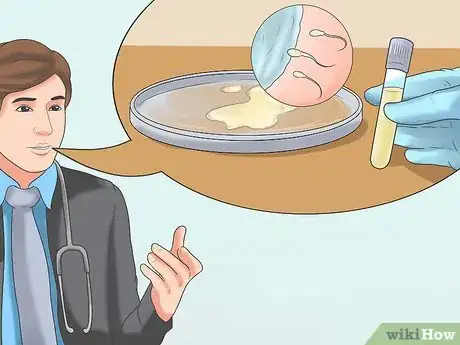
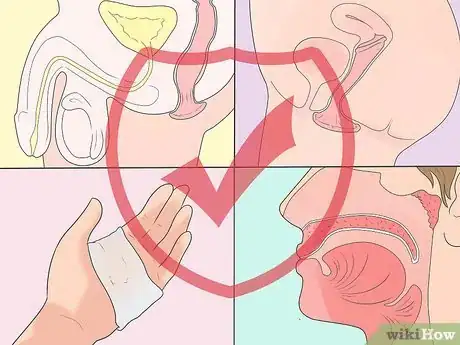



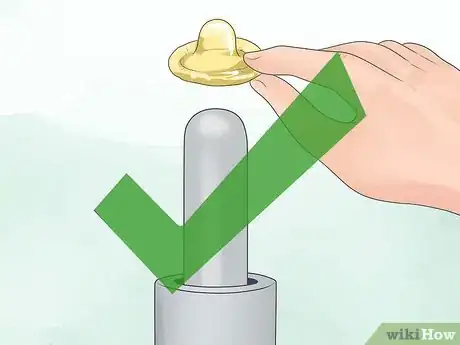
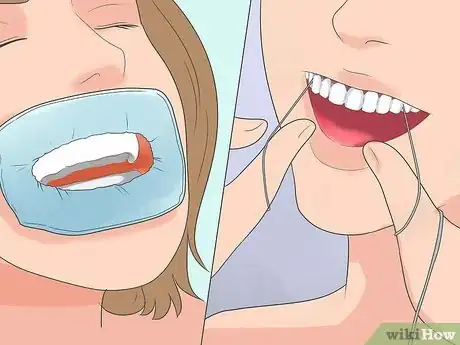
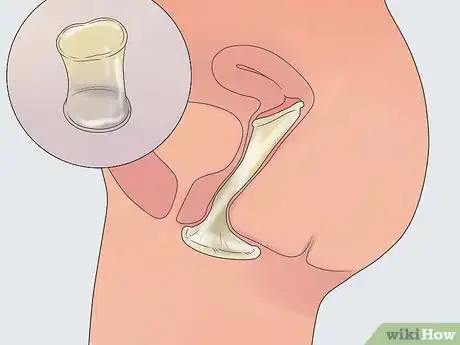
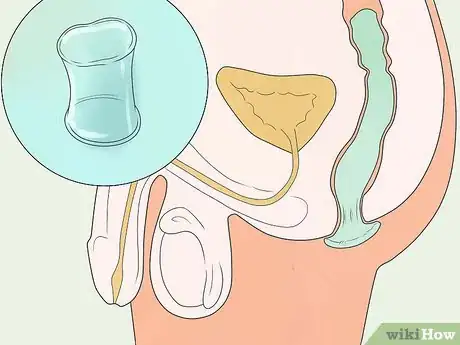
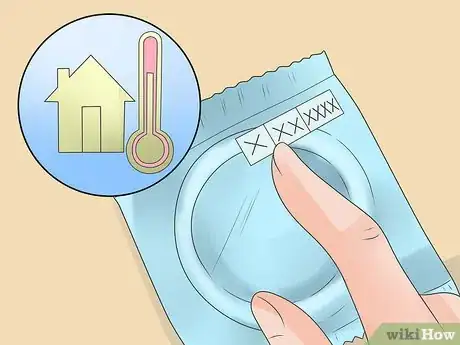
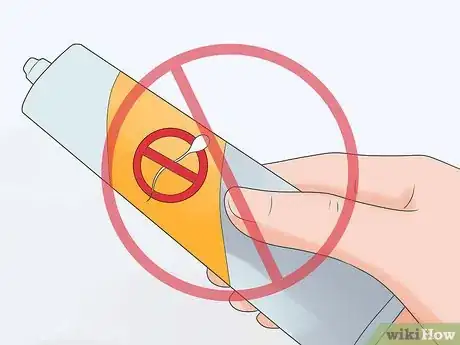
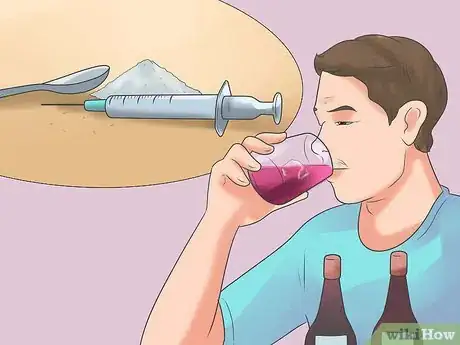
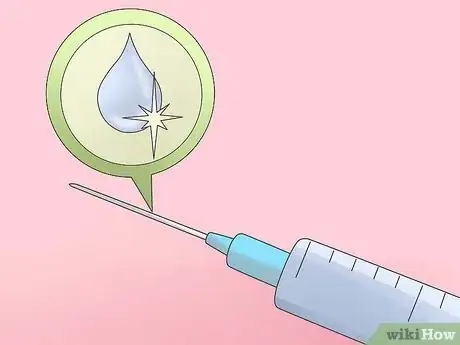
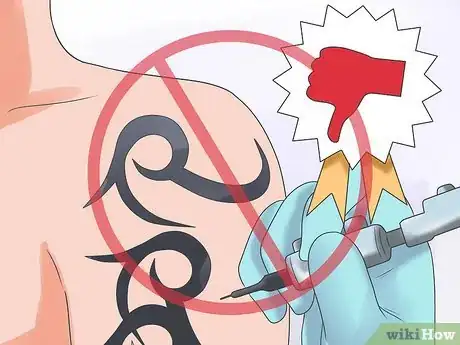
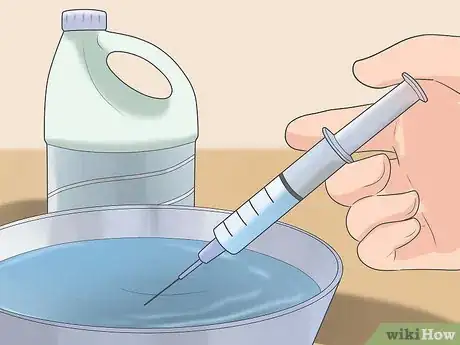
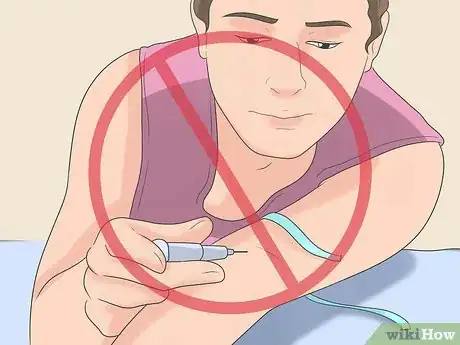
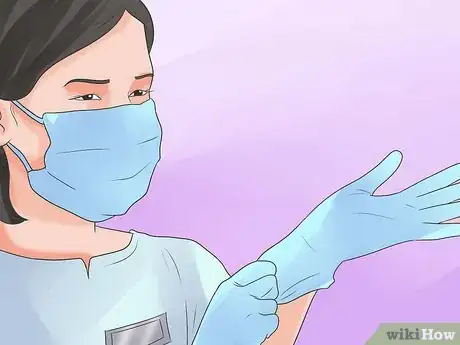
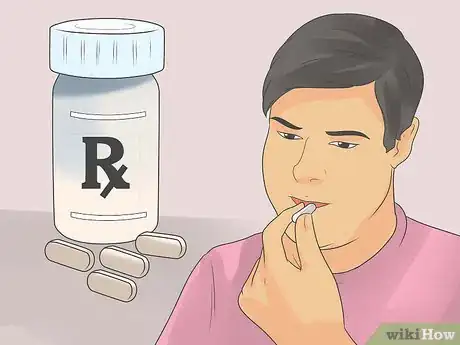
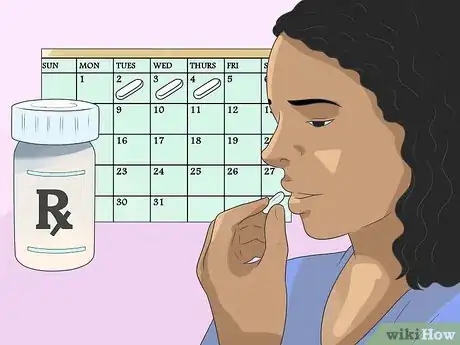
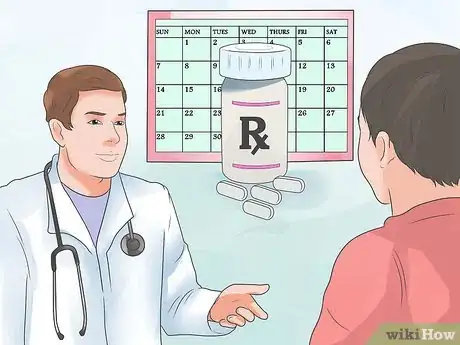
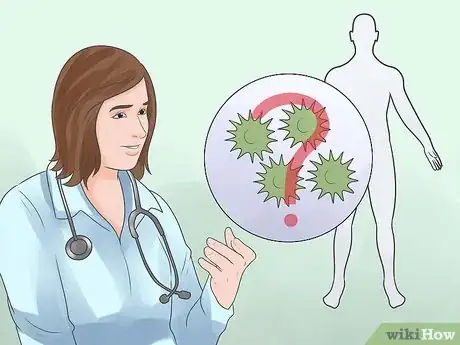

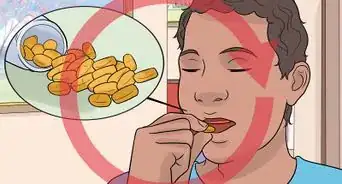
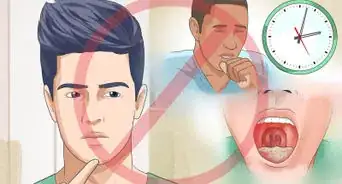

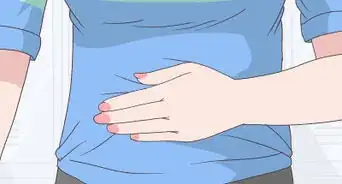

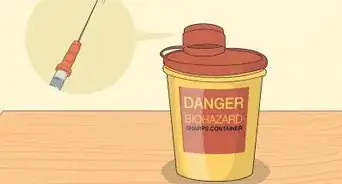











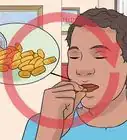
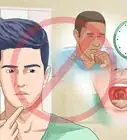
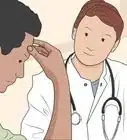
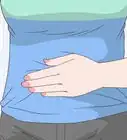



































Medical Disclaimer
The content of this article is not intended to be a substitute for professional medical advice, examination, diagnosis, or treatment. You should always contact your doctor or other qualified healthcare professional before starting, changing, or stopping any kind of health treatment.
Read More...